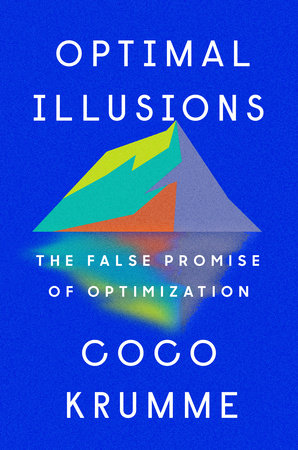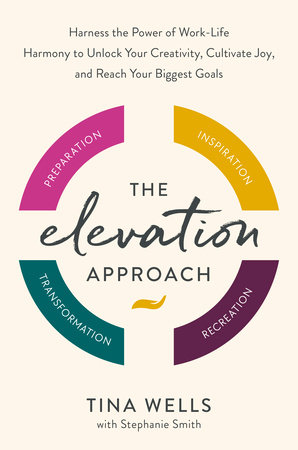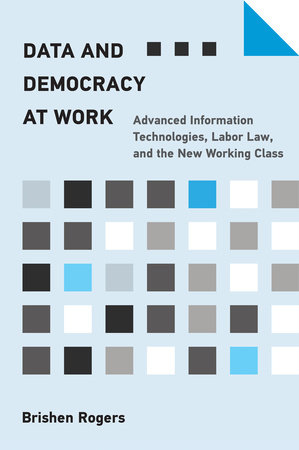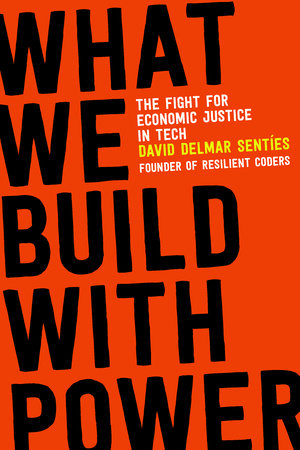Quick Summary
One Sentence Summary
“The Performance Paradox” by Eduardo Briceño explores the counterintuitive dynamics between performance and learning, emphasizing how embracing mistakes and challenges leads to greater growth and achievement.
Big Idea
The central theme of the book is the ‘Performance Paradox’, which suggests that focusing too much on performance can inhibit learning and growth, while a learning-oriented approach can ironically lead to better performance outcomes.
Five Key Ideas
- Performance vs. Learning Zone: Briceño distinguishes between the ‘performance zone’ where the goal is to execute tasks successfully, and the ‘learning zone’, where the focus is on skill development and experimentation.
- Embracing Mistakes: The book stresses the importance of embracing mistakes as learning opportunities, rather than viewing them as failures.
- Growth Mindset: It underscores the significance of a growth mindset, a concept popularized by Carol Dweck, in fostering continuous improvement and resilience.
- Feedback and Reflection: The role of constructive feedback and self-reflection in personal and professional development is highlighted.
- Balancing Act: Briceño offers strategies for balancing the performance and learning zones in various aspects of life, including work, education, and personal growth.
Actionable Advice
- Create Safe Learning Environments: Encourage spaces where making mistakes is acceptable and viewed as a part of the learning process.
- Practice Reflective Learning: Regularly reflect on experiences to extract lessons and insights for improvement.
- Seek Constructive Feedback: Actively seek and embrace feedback to identify areas for growth.
About the Author
Eduardo Briceño is a renowned thought leader in the field of learning and development, known for his insightful approaches to enhancing performance through embracing a learning mindset.
Read Next
For further exploration of similar themes, consider reading:
- “Mindset: The New Psychology of Success” by Carol Dweck, which delves into the growth mindset concept.
- “Peak: Secrets from the New Science of Expertise” by Anders Ericsson and Robert Pool, exploring the science behind exceptional performance.
- “Grit: The Power of Passion and Perseverance” by Angela Duckworth, discussing the role of grit and determination in achieving success.
In Depth
Performance vs. Learning Zone
Eduardo Briceño’s “The Performance Paradox” revolves around a crucial concept: distinguishing the ‘performance zone’ from the ‘learning zone.’ These two zones represent different mindsets and approaches we take in various aspects of life.
In the performance zone, the focus is on executing tasks successfully. This is where we apply what we know to achieve results. It’s about doing things right – making fewer mistakes, showing our competence, and often, being judged by others on our abilities. This zone dominates most of our professional lives, where outcomes matter and performance is key.
Contrastingly, the learning zone is about exploration and growth. Here, the objective is not to get things right but to enhance our skills and understanding. It’s a space for experimentation, making mistakes, and learning from them. In this zone, the emphasis is on process over outcome.
Briceño uses a compelling example from the book to illustrate this concept. He talks about musicians and how they approach practice sessions. Most of us would assume they spend their time playing pieces they perform in concerts. However, musicians often spend practice sessions working on parts they can’t play well – they’re in the learning zone. They experiment with different techniques, make plenty of mistakes, and gradually improve. But during a concert, they switch to the performance zone, where the goal is to play flawlessly.
This example beautifully captures the essence of the two zones. As Briceño puts it, “In the learning zone, we maximize our growth, while in the performance zone, we maximize our immediate performance.” The book further explains that the key to optimal growth and performance is not just hard work, but smart work – knowing when to be in which zone.
The book emphasizes that while society often values the performance zone more, spending time in the learning zone is crucial for long-term growth. This is especially true in rapidly changing fields where continuous learning is vital. However, many people avoid the learning zone due to the fear of making mistakes or appearing incompetent.
Briceño suggests strategies to overcome this fear, like setting aside specific times for learning, where mistakes are not just accepted but expected. He encourages embracing a mindset where challenges are seen as opportunities to learn rather than threats to performance.
“The more we can shift our mindset from needing to prove ourselves in every situation, to seeing every situation as an opportunity to improve ourselves, the more we can move between the learning and performance zones in a way that serves our growth.”
In essence, understanding and balancing these two zones can lead to not only better performance in the short term but also significant growth and skill development in the long run. This balance is a dynamic process that requires self-awareness and intentionality, key themes that Briceño artfully weaves throughout his book.
Embracing Mistakes
Shifting our perspective on mistakes is a fundamental aspect of Eduardo Briceño’s teachings. He argues that mistakes are not just inevitable, but they are invaluable stepping stones in our learning journey. This idea is crucial for personal and professional growth.
In a world obsessed with perfection, making mistakes is often seen as a failure. However, Briceño turns this notion on its head. He suggests that mistakes are powerful learning tools. When we make a mistake, it provides clear feedback on what doesn’t work, paving the way for us to explore new methods or understandings.
A standout example from the book involves a case study in a corporate setting. A team working on a project faced a significant setback due to an oversight in their planning. Instead of penalizing the team, the leader used this as a learning opportunity. They conducted a thorough review, identifying not only what went wrong but also how similar mistakes could be avoided in the future. This approach not only solved the immediate problem but also enhanced the team’s problem-solving skills and resilience. The team learned to view mistakes not as failures, but as valuable lessons.
This approach ties back to the concept of a growth mindset. By embracing mistakes, we foster an environment where continuous improvement is possible. It’s not about failing; it’s about learning and progressing. As Briceño puts it:
“When we see mistakes not as failures but as opportunities for growth, we develop resilience and a true understanding of what it means to succeed.”
The key is to detach our self-worth from our performance. This detachment allows us to objectively analyze our mistakes without personal bias or emotional distress. By doing so, we can extract the valuable lessons they offer.
Briceño also emphasizes the importance of a supportive environment for this process. In a culture that stigmatizes mistakes, it’s challenging to embrace them openly. Leaders, educators, and even peers play a crucial role in creating an atmosphere where mistakes are not just tolerated, but encouraged as part of the learning process.
This approach has far-reaching implications. In education, it encourages students to try challenging problems without fear of judgment. In the workplace, it fosters innovation, as employees feel safe to experiment with new ideas. Even in personal life, accepting and learning from mistakes can lead to significant personal growth and fulfillment.
In conclusion, Briceño’s perspective on mistakes challenges the conventional narrative of success and failure. By redefining mistakes as essential components of the learning process, he provides a roadmap for growth that is both practical and empowering. This shift in mindset is not just about embracing our imperfections but about recognizing them as the catalysts for our development and success.
Growth Mindset
The concept of a growth mindset, a term popularized by psychologist Carol Dweck, is a key idea that underpins much of Briceño’s approach. A growth mindset is the belief that abilities and intelligence can be developed through dedication and hard work. This perspective contrasts sharply with a fixed mindset, where abilities are seen as static and unchangeable.
Briceño explains that adopting a growth mindset is crucial for long-term success and fulfillment. With a growth mindset, challenges become opportunities to improve, effort is a path to mastery, and constructive feedback is a source of valuable insights. This mindset fosters a love of learning and a resilience that is essential for great accomplishment.
One vivid example from the book involves a school teacher who transformed her classroom by instilling a growth mindset in her students. Instead of praising students for their innate intelligence or talent, she praised their effort, strategies, and progress. This shift in feedback led to remarkable changes in the students’ attitudes and performances. Students who previously saw themselves as ‘not math people’ began to engage more deeply, showing improvements in both their skills and their confidence. This example illustrates the power of a growth mindset in creating a positive and effective learning environment.
Briceño emphasizes that adopting a growth mindset is not just about positive thinking. It’s a practical approach to learning and development. He states:
“Embracing a growth mindset means recognizing that our abilities are not fixed, but rather can be developed through dedication, hard work, and learning from experiences.”
This idea has profound implications. In the workplace, it encourages continuous professional development and adaptation to changing environments. For individuals, it means personal growth is always within reach, regardless of age or previous achievements.
The growth mindset also changes how we perceive effort. In a fixed mindset, effort is often seen as proof of inadequacy – if you have to work hard at something, it means you’re not naturally good at it. But with a growth mindset, effort is a necessary and celebrated part of the learning process. It’s the tool through which skills are honed and potentials are realized.
The book further explores how to cultivate a growth mindset. It involves being mindful of the language we use with ourselves and others, focusing on process over outcome, and reframing challenges as opportunities. It also means recognizing that setbacks are not reflections of our inherent worth but part of the natural learning process.
In summary, the growth mindset is a powerful tool for personal and professional development. It changes the way we approach learning, challenges, and effort. By adopting this mindset, we open ourselves up to endless possibilities for growth and achievement, regardless of where we start.
Feedback and Reflection
Feedback and reflection are central to the process of learning and development. Briceño emphasizes the importance of not just receiving feedback but actively seeking it out and reflecting on it for continuous improvement.
In the book, there’s a compelling example of a professional athlete. This athlete, unlike most, didn’t just rely on his coach’s feedback; he actively sought feedback from multiple sources – peers, opponents, and even from watching his own performance videos. This relentless pursuit of feedback, combined with deep reflection, allowed him to identify subtle areas for improvement that others might miss. It’s a testament to how feedback, when combined with reflection, can lead to exceptional growth.
Briceño points out that feedback is often underutilized because it can be hard to hear. It challenges our self-perception and can evoke defensive reactions. However, he argues that this discomfort is a necessary part of growth. He writes:
“True growth comes from stepping out of our comfort zones, and feedback is one of the most straightforward ways to step out. It provides us with the perspectives we need but might not want to hear.”
Reflection complements feedback by providing the space to process and make sense of it. It’s about taking the time to think about what the feedback means and how it can be applied. Reflection turns feedback from mere information into actionable insights.
Briceño suggests practical ways to engage in reflection. Keeping a journal, setting aside time for thought, or even discussing experiences with a mentor or peer can be effective. The key is to create a habit of reflecting on experiences, feedback, and even daily interactions.
The example of the athlete also highlights the importance of self-reflection. His success was not just due to the volume of feedback he received but how he internalized it. He reflected on each piece of feedback, no matter how small, and considered how it fitted into his broader goals and strategies.
In a broader sense, feedback and reflection are crucial in any area of life where growth and improvement are desired. In the workplace, they can transform how teams operate and lead to significant increases in efficiency and effectiveness. In personal relationships, they can deepen understanding and foster better communication.
The concept goes beyond mere self-improvement. It’s about creating a cycle of continuous learning and adapting, a key theme throughout Briceño’s teachings. By embracing feedback and reflection, we open ourselves to new possibilities and perspectives, making us not just more competent but more well-rounded individuals.
In summary, feedback and reflection are not just tools for improvement; they’re essential components of a growth-oriented lifestyle. As Briceño puts it, they are the “cornerstones of learning and development,” indispensable for anyone looking to maximize their potential.
Balancing Act
The balancing act between the performance and learning zones is a pivotal concept. Briceño emphasizes that both zones have their place and importance, and skillfully navigating between them is key to long-term success and personal growth.
An illustrative example in the book involves a business leader managing a tech start-up. This leader allocated specific periods for her team to focus exclusively on learning and experimentation, separate from their usual performance-driven tasks. During these periods, the team was encouraged to take risks, explore new ideas, and learn from failures without the pressure of immediate results. This approach not only boosted the team’s creativity and innovation but also enhanced their overall performance when they returned to their regular tasks.
This example underscores a crucial point: while performance is important, it’s equally necessary to create opportunities for learning and growth. Briceño states:
“Finding the right balance between the performance and learning zones allows us to achieve more in the long run than if we focused solely on immediate results.”
This balance is not static but dynamic, changing based on circumstances and goals. It requires a conscious effort to recognize when to switch from focusing on executing tasks flawlessly to exploring and learning new ways of doing things.
In practical terms, balancing these zones might mean setting aside time for skill development amidst a busy work schedule or adopting a more experimental approach in certain projects. It could also involve changing how we approach tasks – seeing them not just as items to tick off a checklist but as opportunities for learning and growth.
The key is to recognize that being in the learning zone doesn’t mean neglecting performance. Instead, it’s about understanding that time spent learning and experimenting is an investment in future performance. This perspective is particularly important in fast-changing industries where the ability to adapt and learn new skills is crucial for staying relevant.
Briceño also discusses how to foster this balance in others, particularly for those in leadership or educational roles. It involves creating environments where learning is valued and supported, and where the fear of failure does not overshadow the pursuit of growth.
In a broader sense, this balancing act is about understanding the interconnectedness of performance and learning. It’s recognizing that while we need to perform to meet certain standards and achieve goals, we also need to learn and grow to enhance our performance over time.
To sum up, the balance between the performance and learning zones is essential for sustainable growth and success. As Briceño puts it, it’s about “navigating the delicate dance between doing and becoming.” It’s a concept that challenges us to rethink how we approach our tasks and goals, emphasizing the importance of continuous learning in our journey towards excellence.
Actionable Advice
- Set Learning Goals: Regularly set specific goals focused on skill development, not just task completion.
- Embrace Challenges: View difficult tasks as opportunities to grow rather than obstacles to avoid.
- Reflect Daily: Spend a few minutes each day reflecting on what you’ve learned and how you can apply it.
- Seek Feedback: Actively ask for constructive feedback from peers, mentors, or supervisors.
- Analyze Mistakes: Instead of dwelling on errors, analyze them to understand what can be learned.
- Allocate Time for Learning: Schedule regular time blocks specifically for learning new skills or exploring new ideas.
- Practice Mindful Experimentation: Try new approaches in low-risk situations to foster creativity and innovation.
- Cultivate a Growth Mindset: Remind yourself that abilities can be developed through hard work and persistence.
- Encourage Others: Foster a learning environment by encouraging others to take risks and learn from their experiences.
- Balance Performance and Learning: Consciously navigate between executing tasks efficiently and exploring new methods of improvement.
About the Author
Eduardo Briceño is a renowned expert in the field of learning and growth mindset. Co-founder of Mindset Works, he’s dedicated to helping people develop their abilities and achieve their goals. Born and raised in Caracas, Venezuela, Briceño moved to the U.S. for higher education, earning degrees from Stanford University and Harvard Business School. His multicultural background deeply influences his work, bringing a unique perspective to learning and development. A sought-after speaker, Briceño has delivered impactful talks at various conferences and organizations, sharing insights on how mindset affects learning and achievement. His writing, including articles and books, focuses on practical strategies for personal and professional growth. Briceño firmly believes in the power of a growth mindset – the idea that abilities can be developed through dedication and hard work. He advocates for embracing challenges, learning from mistakes, and seeing effort as a path to mastery. This belief underpins his work, aiming to inspire and equip individuals and organizations to continually evolve and excel.
Read These Next
You might like these similar books
- “Mindset: The New Psychology of Success” by Carol S. Dweck
- “Peak: Secrets from the New Science of Expertise” by Anders Ericsson and Robert Pool
- “Grit: The Power of Passion and Perseverance” by Angela Duckworth
- “Drive: The Surprising Truth About What Motivates Us” by Daniel H. Pink
- “The Talent Code: Greatness Isn’t Born. It’s Grown. Here’s How.” by Daniel Coyle
FAQ
Q: What is the main theme of ‘The Performance Paradox’?
A: The book explores the balance between performance and learning, highlighting how focusing too much on performance can hinder growth.
Q: Who would benefit from reading this book?
A: Anyone interested in personal development, educators, business leaders, and those seeking to improve their learning and performance strategies.
Q: Does the book provide practical advice?
A: Yes, it offers actionable strategies for balancing learning and performance in various life aspects.
Q: What unique perspective does Eduardo Briceño bring to this topic?
A: Briceño combines insights from his multicultural background and extensive research in learning and development.
Q: Can ‘The Performance Paradox’ help in professional settings?
A: Absolutely. It’s particularly useful for enhancing workplace learning cultures and individual professional growth.
Q: Is the concept of a growth mindset discussed in the book?
A: Yes, the book delves into the growth mindset and its role in continuous improvement and resilience.







